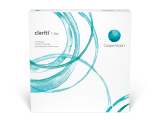By Dave Anderson, OD
From vendor participation to incorporating hands-on wet labs, Dr. Dave Anderson offers his top tips on how ECPs can maximize their staff meeting success.
ECPs are all busy with patient care and using new technology for diagnoses and treatment plans, but do staff know what you do in that dark room every day? Do you come across interesting cases that you think other members of your team might want to know about? Do you find yourself thinking about patient visits and wonder if your staff could have helped more? And do you take the time to note these areas and set a plan to improve on them?
If you hold regular staff meetings, you already have set the stage with a built-in audience that can embrace your ideas and implement any necessary changes to your practice.
But even if you hold regular meetings, staff may still ask, “What’s the point of this meeting?” “Why are we are going over this?” or “Why do I have to get up early to be here?”
These are all common questions ECPs hear from staff, right? But consider, if you don’t hold effective meetings, you’ll likely receive this kind of feedback.
Step 1: Establish Your Meeting “Why”
Your first part of the meeting setup is establishing the why. If your staff understands the reason why you are meeting, they are more likely to engage and leave with a purpose. For example, this outcome is easy to achieve if the meeting’s focus is to discuss staff attendance for an upcoming conference or to review your practice’s privacy policies.
But how do you help staff understand the why of a regular meeting? This is quite easy to accomplish if you continue to focus on the why of your practice –which is to better help your patients.
Here’s one example:
“During today’s meeting, we are going to cover the importance of triage. Last week, Susan was able to help a patient by asking the right questions, and because of this, she scheduled the patient as an urgent visit. The patient originally called the office to schedule an exam. Instead of just scheduling a routine appointment, Susan asked the patient if she was experiencing any sudden changes to her vision. Based on the patient’s feedback, Susan scheduled her right away. It turned out that the patient had a retinal detachment that needed surgery that same day.”
In this case, the focus of your meeting is triage, but sharing a real-life story helps the staff understand the importance of this seemingly simple task.
Remember, always start the meeting with the why.
Step 2: Embrace Consistency
To have effective meetings, you need to schedule them on a regular basis, typically weekly or bi-weekly. Obviously, every office flow and staff schedule can be a bit different, but staff meetings need to be attended by all and set for a consistent day and time.
When setting staff schedules, be sure to include a specific day and time so everyone understands that this is part of their regular work schedule.
Book your meeting schedule far in advance and provide a variety of topics each week.
Step 3: Rely on Your Reps
As part of this routine, leverage your vendors to help your staff better understand the new technology and treatments that you prescribe for your patients. Whether you are introducing myopia management to your office or adding new contact lenses to your fitting arsenal, sales reps can provide insights on why their product can help your patients.
Sales reps can also customize the presentation to make it suitable for your entire team.
This will result in better staff engagement, and in turn, can help them take greater responsibility in caring for your patients as they become more knowledgeable.
Top Tips on Maximizing Your Staff Meetings
Is your practice in need of a staff meeting reset? Maybe you once held staff meetings, but they didn’t resonate, or staff didn’t engage or follow-through. Or, maybe you already hold regular meetings, but your staff seem to enjoy their coffee and bagels more than the topic being covered. Or maybe you want to better leverage industry partners to join in the meeting conversations.
If you checked the box to any of these scenarios, now what?
First, it may be a good idea to implement a few simple strategies to improve the quality of your meetings. Here are a few simple tips to get you started:
- Pre-determine your agenda. Create a centralized list where anyone can add agenda items.
- Adopt a “no patient” policy. Devote this time entirely for staff and not patient visits. Lock the doors.
- Keep meeting notes and store them in a centralized meeting folder.
- Develop measurable goals and action plans.
- Discuss any patient systems that need addressing. Implement a running implementation task/responsibility sheet.
- Conduct an educational workshop at least once a month.
- Review production stats–revenue per patient, percent AR, total new and existing patients, contact lens fits or refits, etc.
- Set monthly goals for the practice.
While these simple suggestions may not seem like a major “shake up” to make your meetings less stale, your staff will be more attentive if you are organized, share documents with your office logo, and encourage participation.
I would also encourage you to ask tough questions at each meeting. The answers may seem obvious to you, but a response to a question like, “Do you all know why I’m fitting more daily disposable contacts?” or “What are the most common questions asked at checkout?” can help you understand the training needs of your staff. When I set my meeting schedules, I typically have a monthly set up where week one covers the past month’s successes. The following week, I usually rely on a vendor partner to help my team understand the product and how it fits into our patient care. The third week, I devote to interactive training, with wet labs and hands-on activities. Finally, the meeting on the last week of the month centers on team building and education.
At the end of the first meeting, I ask staff to vote on the topics for the next month, and then I add the ideas to the monthly schedule. This allows me to line up the vendor and determine which product or service they will discuss, and I will then set up additional training around that topic. Below is an example of how this may look:
Week 1: The ECP and staff will review the previous month’s successes and decide on topics for the following month, which could be dry eye, diabetes, or kids and contact lenses.
Week 2: A CooperVision rep will discuss MyDay® Toric lenses, and why daily disposable contacts are a good choice for our patients.1,2
Week 3: This hands-on meeting will consist of a contact lens fit wet lab, where three staff will try on contact lenses, and the fits will then be reviewed under a microscope by all staff.
Week 4: For team building, this meeting will include a trivia contest on daily disposable contact lenses and the winner will receive a ten-dollar coffee gift card.
Remember, your staff is an extension of you. They are your first line of customer service, and your additional resource of knowledge for your patients. Get your staff engaged and keep them engaged through regular and effective staff meetings. Your practice and patients will reap the rewards.
Start planning your 2024 staff meeting schedule. Begin asking your reps if they would like to present to your staff to help your team gain a greater understanding of their products. Your staff truly want to help patients, and the more they know, the more they will care. Good luck in your next step towards excellent patient care.

Dr. Dave Anderson of Miamisburg Vision Care is a 2004 graduate of The Ohio State University College of Optometry. He is a past president of the Ohio Optometric Association and continues to serve on many committees at the state- and national-level. He is a preceptor for an Advanced Practice Extern site for OSU College of Optometry and has been an investigator in clinical trials for contact lenses and ocular pharmaceuticals.
1. Orsborn G, Dumbleton K. Eye care professionals' perceptions of the benefits of daily disposable silicone hydrogel contact lenses. Contact Lens Anterior Eye. 2019 Aug;42(4):373-379.
2. Fleiszig SM, Evans DJ. The Pathogenesis of Contact Lens-Associated Microbial Keratitis. Optom Vis Sci. 2010 Apr; 87(4): 225–232.








